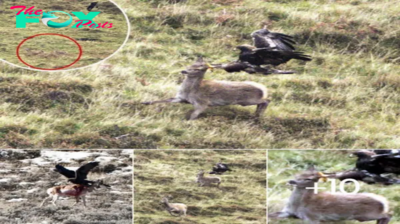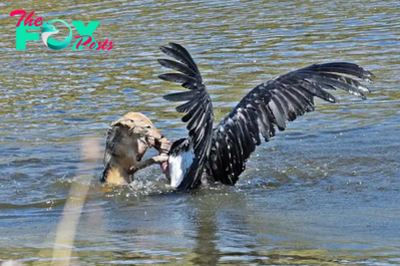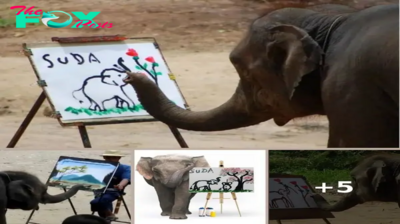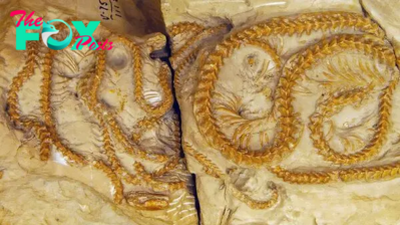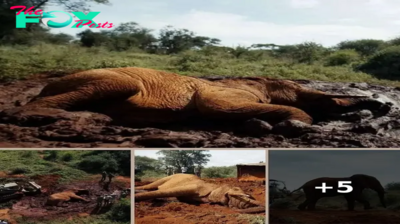180 Million-Year-Old ‘Sea Dragon’ Skeletal Remains Dug Up In ‘Unprecedented Discovery’
A brand new species of enormous sea creature from the Cretaceous era has been discovered in Morocco, lying fossilized next to remains of its last supper.
Named Thalassotitan atrox, this giant sea reptile was a mosasaur, and lived around 66 million years ago, near to the explosive asteroid-triggered end to the Cretaceous period.
According to the authors of the study announcing the discovery of the fossil published on August 24 in the journal Cretaceous Research, Thalassotitans were apex predators in the oceans, growing up to 40 feet in length and hunting a variety of other marine-dwellers.
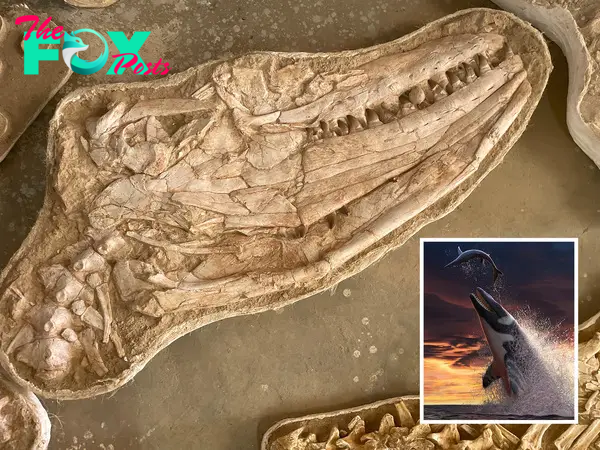
“Thalassotitan was an amazing, terrifying animal,” said Dr. Nick Longrich, senior lecturer from the Milner Centre for Evolution at the University of Bath and lead author of the study, in a statement. “Imagine a komodo dragon crossed with a great white shark crossed with a T. rex crossed with a killer whale.”
Mosasaurs weren’t dinosaurs, instead were huge lizards, distantly related to modern-day iguanas. They were apex predators in the oceans, growing up to 40 feet in length and hunting a variety of other marine-dwellers.
“They ate a lot of stuff. Mostly they’re probably eating stuff like fish and squid. Some of them have crushing teeth, so probably stuff like clams, sea urchins, crustaceans and ammonites. This one ate other marine reptiles,” Longrich told Newsweek.
This particular fossil, found in the Oulad Abdoun Basin of Khouribga Province, Morocco, was also surrounded by what may have been its victims. Nearby fossils, including large predatory fish, a sea turtle, a half-meter-long plesiosaur head, and jaws and skulls of at least three different mosasaur species, show damage from acids, with their teeth and bone eaten away. This gives credence to the researcher’s theory that they had been eaten by the Thalassotitan, digested in its stomach, and spat out as mere bones.
“It’s circumstantial evidence,” said Longrich in the statement. “We can’t say for certain which species of animal ate all these other mosasaurs. But we have the bones of marine reptiles killed and eaten by a large predator. And in the same location, we find Thalassotitan, a species that fits the profile of the killer – it’s a mosasaur specialized to prey on other marine reptiles. That’s probably not a coincidence.
It’s thought that Thalassotitan, just like countless other species living in the late Cretaceous period—including T. rex and triceratops—were decimated to extinction by the after-effects of the asteroid strike 66 million years ago.
“They were wiped out by the asteroid impact, just like the dinosaurs,” Longrich told Newsweek. “They seem to have been active, even warm-blooded Animals, and this and their large size meant they needed a lot of food. When the debris from the asteroid blocked out the sun, photosynthesis shut down, plankton stopped growing, and the food chain just sort of fell apart. The marine ecosystem was hit extremely hard; a few sea turtles survived and sharks survived pretty well; most marine reptiles and big fish went extinct.”

Update 08/26/22, 4:44 a.m. ET: This article was updated to include a picture.
